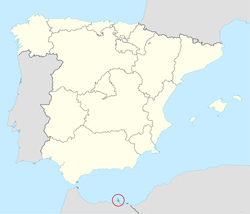Autonomous Enclave of Melilla

Just like Ceuta, Melilla is an autonomous city, not part of a province. It is Spain’s second enclave on the African continent and it is situated on the Mediterranean coast.
Nestled in the heart of the Rif region it is home to over 86,000 inhabitants; it has certain peculiarities due to its geographical position and its history, both as far as its economic activities, its culture and the make-up of its population are concerned.
These are the result of the coexistence of Christians, Muslims and Jews ever since the 19th century. The city also receives a large floating population every day, people who live in Morocco, especially in the province of Nador, and go across the border to work and return home in the evening.
 Melilla has a surface of 12 km2 and is surrounded by Morocco to the north, west and south. To the east it faces the Alboran Sea.
Melilla has a surface of 12 km2 and is surrounded by Morocco to the north, west and south. To the east it faces the Alboran Sea.
The enclave’s economy is dominated by the service sector, which accounted for 80% of the 1.564b euro that constituted Melilla’s GDP in 2018. A large part of the territory’s income stems from public administrations and grants.
The large majority of the active population are in public employ, either of the state or the city.
Another important contributor to the economy is cross border trading, legal and otherwise.
The population is of mixed origin with 46% having Spanish ancestry; they speak Castilian Spanish and belong to the Catholic religion; 44% are Muslims, mainly from the surrounding Rif region. Some of these have Spanish as their native tongue, and others speak Tamazight, which is the most spoken language in Rif.
Tamazight is an official language in Morocco but not in Melilla, although there is an article in Melilla’s statutes that calls for the ‘protection and promotion of the Berber language and culture’.
Another group, of greater historic than numerical importance, are the 1,000 or so Jews, mainly descendants of the Sephardic Jews driven out of mainland Spain during the Inquisition. This group has diminished drastically over the last few decades.
Throw into this mix the groups of Hindu, Chinese and Algerian immigrants, as well as the floating population of Moroccans and Sub Saharan and Syrian hopefuls that use Melilla as a stepping stone for reaching Europe, and you come up with a fascinating melting pot of languages and cultures which is what makes Melilla unique.
Melilla is home to one of Spain’s largest walled fortresses. It is 2,000 metres long and contains a myriad of ramparts, stores, wells, caves, mines, chapels and hospitals. One of the chapels is Africa’s only Gothic religious building; another important feature of Melilla is the fact that after Barcelona it is one of the cities with the largest representation of modernist architecture in Spain. There are more than 500 modernist buildings in the autonomous city which makes it number one in this architectural style on the African continent.
The climate in Melilla is fairly dry and hot. The annual average temperature is 19ºC; in August, which is the hottest month, the average temperature lies at 26ºC. The annual rainfall is just under 400 mm and most intensive in winter, spring and autumn. Melilla enjoys around 2,600 hours of sunshine a year.
One blot on Melilla’s image is the barrier that runs along the border it shares with Morocco. It consists of two parallel 6 m tall chain link fences, topped with razor wire, that stretch for the full 12 km of the border.
It was installed in 1998 to the tune of 5.5b pesetas (about 33 million euro) to keep illegal immigrants out of the territory. There have been runs on the fences with regular intervals over the years, with hundreds, and sometimes thousands, of desperate Africans hoping to make it across and into ‘Europe’. Usually a few immigrants manage to get through, because there are far too many of them for the Guardia Civil agents to catch.
Melilla is accessible from the Iberian Peninsula by air or sea. There are ferries from the cities of Almería and Málaga (the former being on the Mediterranean coast opposite Melilla) and regular flights from several Spanish airports. The flight from Almería takes just 40 minutes.


